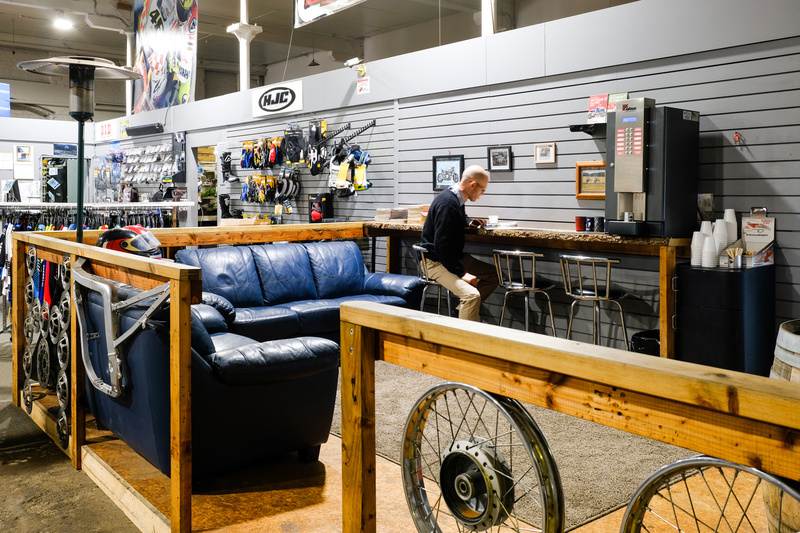A Comprehensive Check Out Bike Parts: What Every Motorcyclist Should Know
A thorough understanding of motorcycle components is not just helpful but vital for any biker intending to maximize efficiency and safety and security. Each component, from the engine's complex workings to the reliability of brake systems, plays an essential duty in the overall experience and performance of the bike.
Understanding the Engine
The engine, typically considered as the heart of a motorcycle, is a complicated setting up of parts that function in harmony to convert fuel right into activity. At its core, the engine's primary function involves the combustion process, where air and gas mix and stir up within the cylinders, leading to regulated surges that drive the pistons. These pistons go up and down, transforming chemical power right into power, which consequently transforms the crankshaft, inevitably powering the bike.

Understanding the intricacies of a bike engine is critical for lovers and riders alike. It not just supplies insight right into exactly how motorcycles attain their excellent power and speed yet likewise aids in reliable maintenance and troubleshooting, ensuring long life and dependability when traveling.
Suspension Equipments
While the engine powers the motorbike, the suspension system plays an essential function in ensuring a smooth and controlled trip. The shock absorber is in charge of absorbing shocks from the roadway surface area, maintaining tire call, and offering security during cornering and braking. It consists of two major elements: the front forks and the back shock absorbers.
Front forks are typically telescopic, wetting and including a springtime mechanism. The springtime compresses and expands to absorb bumps, while the moistening mechanism regulates the movement to avoid extreme bouncing. This combination makes certain the front wheel stays in contact with the roadway, providing superior handling and convenience.
The back suspension, usually a monoshock or twin-shock arrangement, works likewise to the front suspension yet is customized to support the motorcycle's weight and motorcyclist - motox parts nz. It manages rear wheel motion, adding to the bike's overall equilibrium and responsiveness
Shock absorber can be adjustable, permitting riders to tweak preload, compression, and rebound settings according to personal preferences and riding problems. This adjustability improves efficiency by optimizing the motorcycle's interaction with diverse terrains. In summary, an effective suspension system is vital for cyclist convenience, safety and security, and the bike's handling expertise.
Brake Elements
Quiting power is a basic facet of bike safety and security, and it rests on the performance of the brake parts. The main aspects of a motorbike's braking system include the motorbike shop brake pads, calipers, rotors, and master cyndrical tube. motocross gear nz. Each of these elements plays a vital function in guaranteeing efficient braking efficiency
Brake pads are necessary as they produce the required friction versus the blades to reduce or stop the motorcycle. Constructed from materials such as sintered steel or organic composites, the choice of brake pad product substantially affects performance and long life. Calipers, housing the brake pads, apply stress to the pads when the brake bar is engaged, facilitating call with the blades.
The rotors, generally made from stainless steel or cast iron, are placed to the wheels and offer as the surface against which the brake pads press. Their layout, including diameter and density, impacts warm dissipation and quiting power. The master cyndrical tube, linked to the brake bar, produces hydraulic stress transferred through brake lines to the calipers, making sure consistent stopping force.
Routine maintenance and assessment of these components are crucial for optimal performance, avoiding wear and ensuring cyclist security on the roadway.
Tire Essentials
Beyond keeping durable braking systems, guaranteeing ideal tire efficiency is just as significant for motorcycle security and performance. Tires are the single contact point between the motorbike and the roadway, making their problem crucial in dealing with, stability, and general experience high quality. Picking the ideal tire type is essential, as it directly affects grip and performance. Options range from exploring to sport tires, each created to suit details riding designs and problems.

In addition, think about the tire's age. Rubber substances deteriorate with time, even if walk shows up sufficient. Examine the sidewall for the DOT (Department of Transportation) code to identify the tire's age. Usually, substitute is recommended every 5 years, despite wear. Investing focus in these tire fundamentals not just optimizes performance yet also dramatically improves riding safety and security.
Electrical Solutions
In the world of motorbike upkeep, the electrical system plays an important duty in making sure trusted performance and biker security. This complex network incorporates crucial components such as the battery, alternator, starter motor, and wiring harness. Each element is important for the seamless operation of the motorcycle, from ignition to lighting and communication with various sensors.
The battery functions as the heart of the electric system, giving the necessary power to start the engine and run devices. Consistently examining the battery's voltage and terminals for deterioration is critical to avoid unanticipated failings. The alternator, on the other hand, recharges the battery while the engine is running, ensuring a continual power supply.
To maintain it, motorcyclists should pay focus to any uncommon noises or difficulties throughout startup. Making certain that the cables are undamaged and complimentary from damage is crucial for stopping short circuits and ensuring capability.
Final Thought

Stopping power is a basic facet of motorbike security, and it hinges on the performance of the brake parts. The main elements of a motorcycle's stopping system consist of the brake pads, calipers, rotors, and master cylinder.Brake pads are crucial as they develop the needed friction against the blades to slow down or stop the bike.Beyond preserving robust stopping systems, making sure ideal tire performance is just as substantial for motorbike safety and efficiency.In the world of motorbike maintenance, the electric system plays a crucial function in guaranteeing reputable performance and cyclist safety and security.
Comments on “Must-Have Motocross Gear: Raise Your Riding Experience Today”